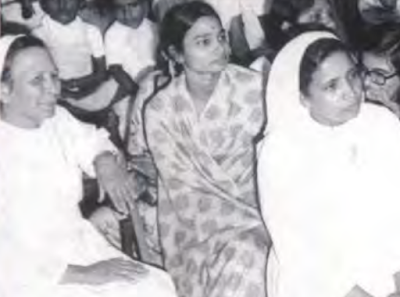There is only one Diego clan on Guam and its håle' (roots) are in Inalåhan.
But they are almost certainly descended from a Filipino soldier of the Pampanga Company whose name was AGUSTÍN DIEGO. He is the only adult person with the surname Diego on Guam in the 1758 Census. He does not appear in the earlier 1727 Census. Pampanga is a province in the Philippines with its own language, different from Tagalog.
DIEGO is the Spanish form of the Latin name DIDACUS. The name can also come from a variation of the name James, which in Latin is Jacobus, which turns into Santiago (Sant + Iago).
Spanish personal, or first, names sometimes became family names or surnames. Think of Pablo (Paul), Blas (Blaise) or the famous Ferdinand Marcos (Mark).
Agustín married Juana Cabangis. Two Cabangis soldiers, also of the Pampanga Company, are in the 1727 Census so Juana could be the daughter of one of them. One of those soldiers married a Chamorro woman, so Juana could already be the beginning of the Chamorro link in the family. Agustín and family lived in the capital city, Hagåtña, but some Spanish, Mexican and Filipino soldiers were sent to the villages to serve as officials. This is probably how one of the Diegos went to Inalåhan.
By 1758, Agustín Diego had two sons but more could have come later. At any rate the Diegos start appearing in Inalåhan by the 1800s.
As far back as 1847, there was an Eduardo Diego who was the warden or alguacil of Inalåhan.
By 1878, or 31 years later, a new figure by the name of José Meyao Diego appears in the records in various civic capacities in Inalåhan, sometimes as warden and other times as Justice of the Peace.
It is this José Meyao Diego, married to Francisca Chargualaf, who is the founder of the clan that continues to this day.
JOSÉ MEYAO DIEGO
and FRANCISCA CHARGUALAF
José's middle name, which was his mother's maiden name, has been spelled in various ways : Miyao and Mellao are just some examples. It doesn't seem to be a Spanish name. It is probably an indigenous Chamorro name, as there are records of Inalåhan people with the name during Spanish times. If it is Chamorro, it could come from the prefix MI, which means "abundant," with the root word YAO or IYAO unknown. It could also be that MEYAO has nothing at all to do with MI (abundant). It remains a mystery.
José was born around 1837. Without an actual baptismal certificate, it's hard to be exact about his date of birth. People were always guessing their ages in those days, and would have different answers every so often.
José and Francisca had numerous children. They had four sons, but only one of the four produced enough male heirs to keep the Diego name going. One son never married. Another son had no children, though married, and another married son had one daughter.
ROMUALDO CHARGUALAF DIEGO married Dolores León Guerrero San Nicolás, the daughter of Gerónimo San Nicolás and Antonia León Guerrero. It is Romualdo who produced enough male heirs to keep the Diego name going. His sons were Joaquín, Enemesio, Juan, Vicente, Jesús and José.
JOAQUIN CHARGUALAF DIEGO married Victorina Meno Mantanoña. Apparently they had no children.
JUAN JOSÉ CHARGUALAF DIEGO married Ignacia León Guerrero, the daughter of Vicenta León Guerrero and an unknown father. They had a daughter Catalina, who later married.
VICENTE CHARGUALAF DIEGO never married.
Then there were José and Francisca's daughters, who were :
MARÍA CHARGUALAF DIEGO who married Francisco Castro.
CLARA CHARGUALAF DIEGO married Joaquín Crisóstomo, the son of Ana Crisóstomo and an unknown father.
VICENTA CHARGUALAF DIEGO married Lucas Taitague Naputi, the son of Mariano Naputi and Antonia Taitague.
JOAQUÍN SAN NICOLÁS DIEGO
"GÅDAO"
Former Commissioner (Mayor) of Inalåhan
Grandson of JOSÉ MEYAO DIEGO
ROMUALDO CHARGUALAF DIEGOFormer Commissioner of Inalåhan before the war
Son of JOSÉ MEYAO DIEGO
signature in 1904
160 YEARS AND 6 GENERATIONS OF DIEGOS
ROMUALDO CHARGUALAF DIEGO, born 1863, father of
VICENTE SAN NICOLÁS DIEGO, born 1908, father of
FRANK PAULINO DIEGO, born 1938, father of
FRANK TAITAGUE DIEGO, born 1969, father of
GAVIN DIEGO, born 1987, father of
FRANCIS PAUL DIEGO, born 2023

















.jpg)